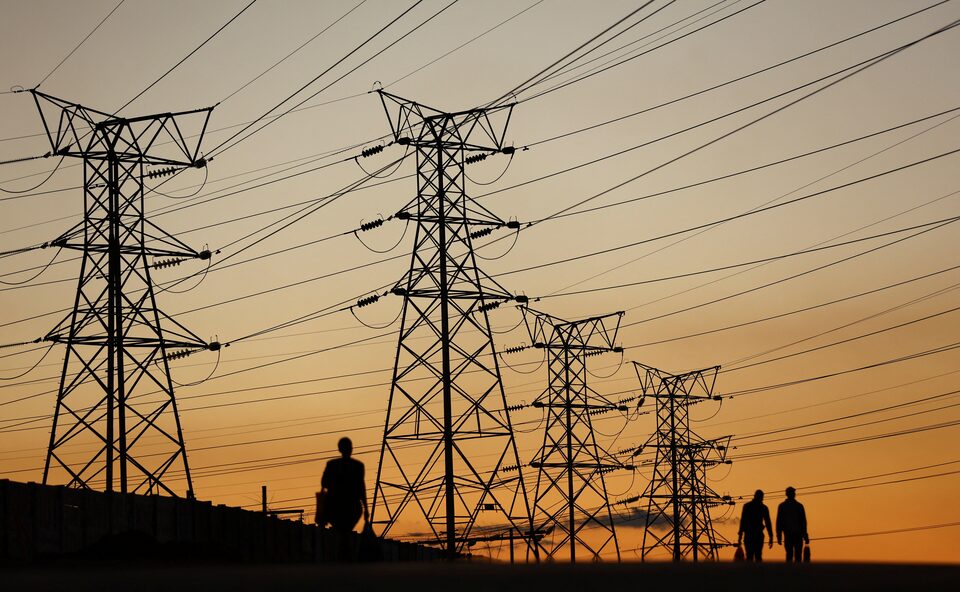Written By: Faith Jemosop
More than 3 million South Africans still live in darkness despite being part of one of Africa’s most developed economies. In an age of global electrification and renewable energy revolutions, South Africa’s persistent electricity access gap reflects deep-rooted infrastructural, economic, and governance failures. The reality is especially stark for rural communities, who remain on the margins of modern energy development.
Load Shedding, Inefficiencies, and Eskom’s Fragile Grid
South Africa’s energy crisis is dominated by chronic load shedding, a term that has become part of everyday vocabulary. Eskom, the state-owned power utility, continues to struggle with aging infrastructure, mismanagement, and insufficient maintenance.
Frequent breakdowns at coal-fired plants have created supply deficits, making it nearly impossible for Eskom to serve existing customers reliably let alone expand services to unconnected communities.
This fragile grid system affects electricity availability in both urban and rural areas. When a national utility cannot guarantee uninterrupted supply to its current users, expansion becomes less of a priority and more of an impossibility.
The Legacy of Apartheid and Neglected Rural Areas
One cannot understand South Africa’s electrification problem without acknowledging its historical roots. During apartheid, infrastructure development favoured white urban areas, while Black townships and rural communities were deliberately underdeveloped. As a result, vast regions in provinces like Eastern Cape, KwaZulu-Natal, and Limpopo still lack grid connections.
Although post-apartheid governments have made strides in addressing inequality, electrification programs have struggled with poor implementation, funding shortages, and political delays. The result? Many rural South Africans are still cooking with wood and relying on paraffin lamps in 2025.
Corruption and the Cost of Mis governance
A significant portion of South Africa’s energy woes can be traced to corruption and sabotage within Eskom and associated ministries. Between 2005 and 2020, billions were looted from Eskom in fraudulent contracts and inflated procurement schemes. Investigations have revealed coal theft, deliberate sabotage at power plants, and collusion between officials and contractors.
This mis governance hasn’t just drained public resources, it has undermined public trust and stalled critical infrastructure projects that could have brought electricity to thousands of homes.
Economic Barriers, When Electricity is Too Expensive to Use
Even when connections are available, affordability becomes the next hurdle. South Africa’s economy has battled sluggish growth, high unemployment (hovering around 32%), and rampant poverty. In many informal settlements and rural communities, households earn far below the national poverty line.
Also read: How Is Sudan’s Civil War Crippling Its Energy Sector?
For these families, the cost of connecting to the grid, paying monthly electricity bills, or maintaining electrical appliances is simply unaffordable. Energy poverty persists not just because of a lack of infrastructure, but because of a lack of disposable income to access and sustain it.
Renewable Energy A Slow Transition Amid High Potential
South Africa has immense potential for solar and wind energy, particularly in the Northern Cape and Eastern Cape provinces. Yet, the transition to renewables has been slow and inconsistent. Regulatory red tape, insufficient investment incentives, and Eskom’s monopoly over transmission have all hindered progress.
The government’s Renewable Energy Independent Power Producer Procurement Programme (REIPPPP) has attracted some private investment. But these projects often feed electricity into the national grid rather than providing off-grid solutions for unconnected communities. As a result, rural and peri-urban areas are still waiting for decentralized solar systems or microgrids that could quickly change their energy realities.
Government Interventions, Promises vs. Progress
The South African government has repeatedly pledged to accelerate rural electrification. Plans under the Department of Mineral Resources and Energy (DMRE) include the rollout of non-grid solar solutions, expansion of mini-grids, and public-private partnerships aimed at last-mile connectivity.
But execution has been inconsistent. Budget cuts, administrative inefficiencies, and political reshuffling have slowed down rollout efforts. For example, the Integrated National Electrification Programme (INEP), once seen as a powerful tool, has seen reduced funding over the years, stalling expansion efforts.
Moreover, coordination between local municipalities and national governments is often weak, with local authorities lacking the technical capacity or resources to implement electrification projects effectively.
Who Are the Most Affected?
The 3 million unconnected South Africans are not a faceless statistic. They are school children doing homework by candlelight, grandparents relying on firewood to cook meals, and entrepreneurs unable to grow businesses due to unreliable or nonexistent power supply.
Also read: How Are Nigerians Quietly Building Their Own Electricity And Why Is No One Talking About It?
In many cases, it’s Black, rural, and low-income households who bear the brunt of this exclusion. Their exclusion from modern energy access limits economic opportunities, educational outcomes, and health standards. Without electricity, basic needs like refrigeration, communication, and digital access remain out of reach.
The Role of the Private Sector and NGOs
Amid slow government action, private companies and non-governmental organizations have begun stepping in to offer off-grid solar solutions. Companies like Konexa and Bboxx have piloted small-scale solar home systems in remote areas.
However, these efforts, while promising, are not yet at scale. Private solutions can also be expensive and often require financing models like pay-as-you-go (PAYG), which may still be out of reach for the poorest households unless subsidies are included.
Solving South Africa’s electricity access crisis will require multifaceted action:
- Decentralized energy policies that promote mini-grids and off-grid solar for rural regions.
- Anti-corruption enforcement within Eskom and associated government bodies.
- Public-private partnerships that focus not just on feeding the grid but empowering communities directly.
- Pro-poor energy subsidies to make electricity affordable for low-income households.
- Targeted investments in infrastructure and skills training for local technicians.
Without a clear roadmap and consistent implementation, South Africa risks entrenching inequality and missing its climate and development goals.
Electricity is not just a convenience, it is a human right and a prerequisite for development. For more than 3 million South Africans, its absence is a daily reminder of economic exclusion and unfulfilled promises. As South Africa looks to a just energy transition, ensuring universal access must be at the heart of its energy agenda.



